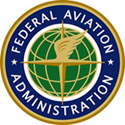Aviation authorities have put an application process in place to allow certain classes of unmanned aircraft to operate commercially before national rules for such activities are approved.
Though other nations allow for-profit operation of unmanned aerial vehicles (UAVs) it is currently illegal in the United States. The first set of rules, which would enable small UAVs to operate in the national airspace, are not expected until at least 2016—well after a 2015 deadline set by Congress.
There is, however, a provision in the FAA Modernization and Reform Act of 2012, the same law that set the 2015 deadline, to allow the FAA to permit certain types of UAVs to begin limited operations if the agency determines they “may operate safely in the national airspace system.” The FAA has been working to do just that.
“Section 333 of our legislation is going to be our best method to allow any commercial operations before the small rule is out. So we’re working to define the niche or the areas in order to go out and utilize that portion of the legislation for commercial activities,” said Randy Willis, manager of the FAA’s Air Traffic Operations, Unmanned Aircraft Systems (UAS) Integration Office. The section “basically tells us to go out and do something before regulations are in place and to enable commercial operations,” he said during a March meeting of MAPPS, a national association of firms offering surveying, spatial data services and geographic information systems.
The FAA official in charge of integrating UAVs into the nation’s skyways told members of the House in March the FAA would be allowing early operations.
“So you intend to have some approvals in advance of others?” asked Rep. Richard Hanna, R-N.Y.
“We react to the industry coming to us requesting their operations to be approved,” said James Williams, manager of the FAA’s Unmanned Aircraft Systems Integration Office, adding his office was working with operators who have asked that their aircraft be approved for operation in the United States. “That is ongoing,” he told Hanna.
“I think section 333 of the FAA Reform Act allows that to take place,” said Michael Toscano, the President and CEO of the Association for Unmanned Vehicle Systems International. “That, unless I’m mistaken, that has provisions in there that would allow approval if there is not a safety risk.”
“On the record, is that (approvals) your intent?” Hanna asked Williams.
“Absolutely,” said Williams. “We’re working… having conversations about exactly that.”
John Palatiello, executive director of MAPPS, told Inside Unmanned Systems his organization had met with the FAA on the issue and was told there was an approval process in place.
“We now know what the path is,” said Palatiello. “It may not be an easy path. It may not be a smooth path. It may not be a straight path—but we do know now that there is a path and we’ll pursue that.”





